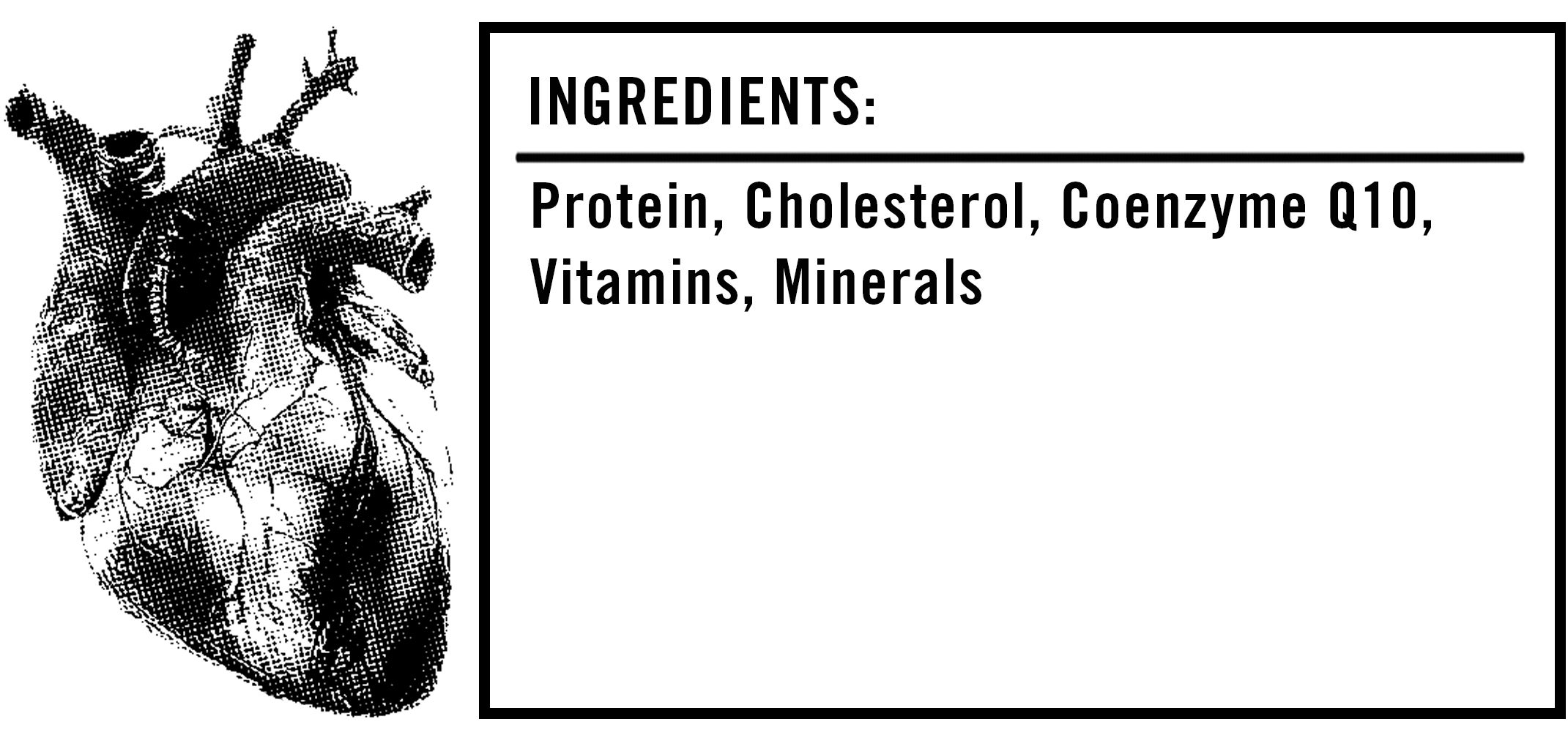We’re often told that you should never eat anything (or put anything on your body) if you don’t recognize everything on the ingredients list. But since most of us have no idea what xanthan gum or potassium benzoate are — or more importantly, what they’re doing to our bodies — we’re decoding the ingredients in the many things Americans put in (and on, or near) themselves.
In the name of Halloween, this week we’re devoting the column to exploring the only cuisine beloved by both dedicated gourmands and zombies: Organ meats. Since these are intrinsically single-ingredient foods, rather than analyzing the individual ingredients as we normally do, we’ll be examining them based on nutritional value and the like.
This edition: Beef hearts, which have been broken down below. First, though, understand that beef hearts are much more desirable than they might seem — meat skewers, or anticuchos, are a staple street food in Peru, for instance, and beef hearts are among the most popular variations. Paleo devotees around the world have also taken to eating beef hearts due to their lean texture and abundance of nutrients (more on that soon). Beef hearts tend to be cheaper than other, more popular cuts, too, which is always a plus.
Now, time to look into some beef hearts.

The Ingredients
1) Protein: Remember, the paleo fanatics latched onto beef hearts in part because of their lean qualities, which are comparable to chicken breasts — a standard three-ounce serving of beef heart has just 95 calories and a decent 15 grams of protein, which is impressive for such a small serving.
2) Cholesterol: While beef hearts are considerably low in fat — a three-ounce serving contains only three grams — the normal serving does contain 105 milligrams of cholesterol, which is comparable to a medium egg. Since cholesterol is a fatty substance found in blood, which is constantly flowing through the heart, it makes sense that beef hearts are somewhat high in cholesterol, although they have nothing on beef brains, which are cholesterol goldmines.
Cholesterol is a complex and disruptive subject among nutritionists, however. Many hold that too much of the stuff, especially in people sensitive to dietary cholesterol, is a major risk factor in the development of heart disease. Still, one serving of beef heart only delivers half the recommended daily dose of cholesterol, so unless you develop an addiction to these unique organ meats, you should be just fine.
3) Coenzyme Q10: Heart meats in general are solid sources of coenzyme Q10, an antioxidant that can help treat and prevent certain diseases, particularly heart disease and other kinds of heart ailments, meaning eating hearts is good for your heart. Studies also suggest that coenzyme Q10 can slow down the aging process and improve energy levels, although more research is needed to confirm that.
4) Vitamins: While beef hearts are a source of all the B-complex vitamins — which help the body in all kinds of ways, ranging from increasing energy production to improving the formation of red and white blood cells — they boast an especially high dose of vitamin B12, which helps create DNA and keeps your nerves and blood cells healthy. It also prevents megaloblastic anemia, which makes people tired and weak.
5) Minerals: Beef hearts are a good source of zinc, which bolsters the immune system, and selenium, which helps with reproduction and prevents free radical damage. But more than any other mineral, beef hearts provide a nice dose of iron — one serving supplies half the daily amount for men and about a quarter of the daily amount for women, who need more iron, because they lose some in their blood each month during their periods.
Iron is a vital component of hemoglobin, a protein needed to transport oxygen in the blood throughout the body, so if you feel unusually tired lately, you could have an iron deficiency. In which case, maybe chowing down on a beef heart is a good idea, but also, y’know, pay a visit to your doctor.
The Takeaway
Nutritionally speaking, beef hearts are about as close to white meat as red meat comes, meaning it boasts a desirable red meat flavor without a side of heart disease. In fact, with coenzyme Q10 and a general lack of unhealthy fats, it could be argued that beef hearts are good for your heart, even though they contain some cholesterol.
One thing I will recommend, however, is braising beef hearts in some kind of stock or putting chunks in a stew and simmering, since the meat tends to be tough and could benefit from some tenderizing. If, though, you still want to grill or fry your beef hearts, just consider marinating them for a good while to provide some extra moisture.
And if you’re wondering what your cooking soundtrack should be, come on, isn’t it obvious?

